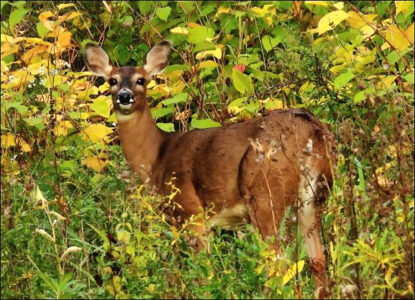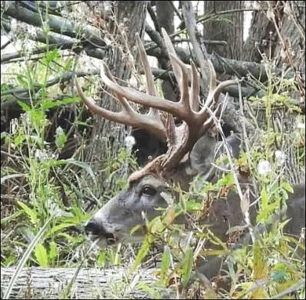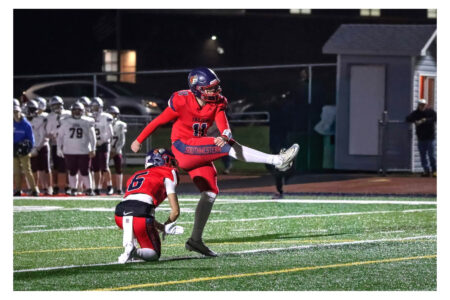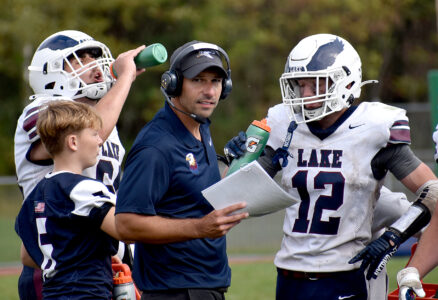How New Hunters Can Find Deer Trails
- Bucks refresh ground scrapes and tree rubs to determine if any doe’s stopped by to communicate their readiness to breed. In the meantime, the biggest deer largely stay hidden during daytime hours. Photo courtesy of James Monteleone
- Deer travel favorite trails between bedding areas and feeding areas and are often alerted to hunter or hiker presence due to the crunchy noise that hunters walking on dry leaves can make. One reason why hunting during a rainy weekend can make sense. Photo courtesy of James Monteleone
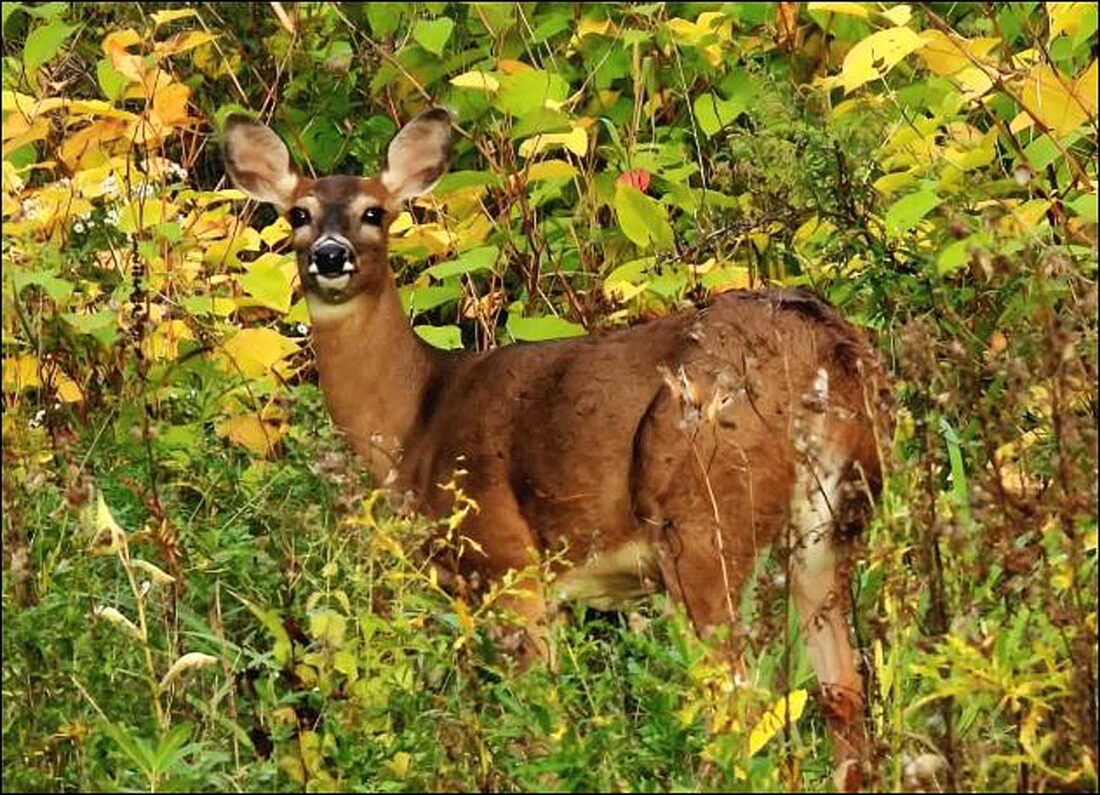
Bucks refresh ground scrapes and tree rubs to determine if any doe’s stopped by to communicate their readiness to breed. In the meantime, the biggest deer largely stay hidden during daytime hours. Photo courtesy of James Monteleone
Deer hunting season is underway across much of the northern United States, and in Western New York, the early archery season is in full swing.
For hunters in Western New York, this is a time of heightened anticipation and excitement. It’s when the crisp mornings, colorful leaves and the quiet thrill of the hunt all converge in our rolling hardwood forests and creek bottom valleys.
This season brings expanded opportunities for archers, as crossbows are now a legal option during the early archery season, opening doors for more hunters, young and not-so-young, to participate. Whatever your age, if you are an experienced bowhunter or new to the sport, understanding deer movement is not just a key, but a powerful tool for success in the woods.
Among the hot topics for each hunter to learn more about is reading the land. Slow down on your walk into the woods and open your eyes to watch for deer. Go as slow as deer go when you see them from your stand. They walk two or three steps, pondering, then look down, left, and right. After a few more steps, they repeat this process throughout their walk through the woods.
Deer establish travel routes much like people follow hiking trails. These well-worn paths connect feeding areas, bedding areas and water sources, often following the same routes year after year. If you have located such a trail over the years and have harvested deer there, you know you are hunting a travel route.
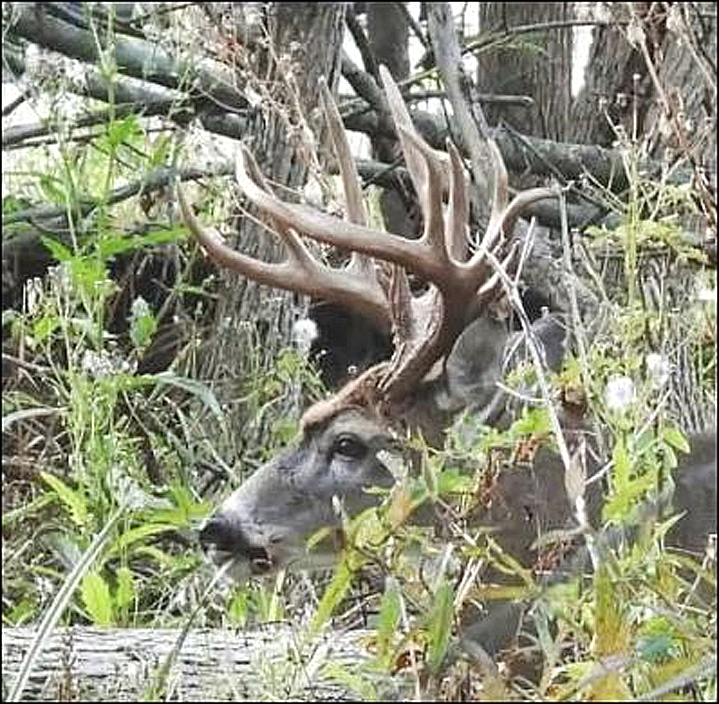
Deer travel favorite trails between bedding areas and feeding areas and are often alerted to hunter or hiker presence due to the crunchy noise that hunters walking on dry leaves can make. One reason why hunting during a rainy weekend can make sense. Photo courtesy of James Monteleone
Deer leave a lot of clues if you slow down and look for them. Fresh tracks in soft soil, droppings, rubbed saplings, ground scrapes and narrow, beaten-down paths through leaves: they all signify a deer trail. Look over the natural funnels and edges where open hardwoods meet thick brush or ridges taper into creek bottoms. These are often reliable places to scout first, hunt later. These natural areas unsurprisingly guide deer movement and make excellent locations for tree stands or ground blinds.
Of course, most hunters are aware that whitetail deer rely heavily on their sense of smell, which experts claim is hundreds of times stronger than that of humans. A subtle shift in wind direction can alert a deer long before you can see it. Use scented soap and clothes wash, and you will likely never see that deer if he is coming from downwind.
“Always hunt the wind,” my late, great, hunting buddy Ray Orlowski would say. He would add with a sly grin, “Unless you’re a smoker.”
Ray was a three-pack-a-day smoker, and he swears the deer were attracted to his wafting cigarette smoke. He shot dozens of bucks over the last 30 years. There is a lesson there, too. Ray is no longer with us. Now that most modern folks have given up the cancer sticks, you know you need to go hunting without a smell. You can do everything else right, but if the wind carries your scent toward a deer trail, the hunt’s over before it begins.
Deer also notice unfamiliar sounds. A squeaky tree stand, clinking metal, quick footsteps jostling the leaves. They are telltale signals to nearby deer that something other than a deer is in the forest. Silence and patience, often more than action, make the difference. If deer could talk, they might tell a noisy hunter, “We heard you coming long before you saw us. Next time, slow down, listen more than you move.”
This strategy can make all the difference in your hunt.
On the other hand, they might say, “Don’t change a thing, we like knowing exactly where you are.”
There are numerous diverse public state forests in Chautauqua County where big-game hunting can be exceptional. The New York State Department of Environmental Conservation manages the state forests. Among hunter favorites are the 2,964-acre Boutwell Hill State Forest near Cherry Creek and Charlotte, where mixed hardwoods (white oak and beech) keep the substantial deer population growing. If you like steep terrain and incredible geographic land formations, not far from Mayville is the 538-acre Chautauqua Gorge State Forest that offers thick cover and reliable travel corridors for deer. Another semi-new, but productive WMA near the town of Poland is the Clay Pond Wildlife Management Area. Situated where the Chautauqua, Cassadaga and Conewango valleys converge, at only 140 acres, this area features wetlands, thick brush, and edge habitat ideal for big deer hiding spots and light transition movement periods. Go prepared to stay dry if you are headed there.
There are 11 state forest parcels (some are several thousand acres) and four state Wildlife Management Areas (not to be confused with Wildlife Management Units) in Chautauqua County. To learn more about each of them, visit https://dec.ny.gov. For a map of each state forest location, visit the Chautauqua County Visitors Bureau and request a travel guide. The center section features a large 24-by-36-inch fold-out map with every forest area identified — the perfect companion for your truck compartment.
Local archery shops and sporting goods stores are excellent resources for gear, hunting advice, and general advice on deer activity. For many hunters, the draw of deer season isn’t just the harvest, it’s the connection to the land and quiet rhythm of the woods. Agreed, though most of us who hunt also want to add some food to the freezer for the winter months ahead.
As the leaves turn and mornings grow colder, the forests across the southern tier come alive with possibility. Don’t forget to stay protected from deer ticks with scent-free Permethrin on your clothes and scent-free Picaridin on any exposed skin. Deer ticks can carry Lyme disease, a potentially deadly virus. For those willing to listen, observe, and learn, the deer trails of Western New York might have a personal story to tell.
Gotta love the outdoors.
CALENDAR
Oct. 21: Erie County Fish Advisory Board meeting, 7 p.m., Bison City Rod and Gun, 511 Ohio St., Open to the public.
Oct. 21: Children in the Stream, Youth Fly Fishing program, free, Costello Room, Rockefeller Art Center, SUNY Fredonia, 7-8:30 p.m., 12 years old and older, info: 716-410-7003 (Alberto Rey).
Oct. 25 to Jan. 12: NYS late Canada Goose hunting season in southern, west central and east central zones; check bag limits; see syllabus.
Oct. 25: Trapping Season Opens, NYS Southern Zone, see syllabus; coyote, fox, etc.
Oct. 25: NYS Northern Zone regular big-game season opens. See syllabus for WMUs.
Oct. 25: WNY Chapter of Trout Unlimited, monthly meeting, 4545 Transit Road, Clarence, fly tying 5 p.m., Meeting 6 p.m.

